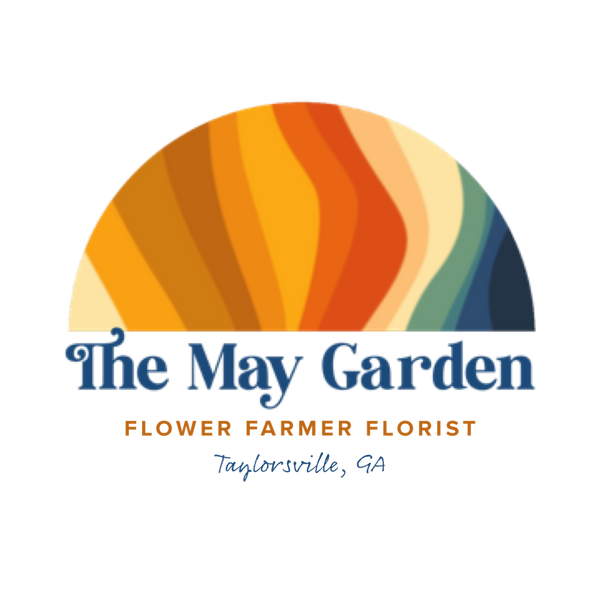This small blue envelope of organic, easy to grow seeds are a perfect mix of wildflowers that can bring you beautiful blooms year after year (otherwise known as perennials).
They germinate easily and will grow with vigor. Coupled with minimal effort, this wildflower mix is perfect for both brown and green thumbs. Especially here in the northwest Georgia town of Taylorsville, GA.

WHEN & HOW: Just be sure to get them in the ground (or in a pot) after the danger of frost has passed in spring. Lightly cover them with a soil rich in organic matter, and then water well.
WATERING: Growing plants will require about an inch of water across the surface soil per week. Check on them regularly and give them a drink of water if they are sad and wilting.
THEN WHAT? If you leave the stalks of the flowers in place over winter once they die from the cold, chances are high they will self seed themselves and you'll have another batch next year like magic.
It may seem unsightly to leave your flower stalks over winter, but not only will you have return flowers the following year, you help provide habitats for our pollinators over winter. A win for you and a win for the ecosystem.
ENJOY watching your wildflowers grow, and be sure to take progress pics and tag us @the.may.garden on Instagram or @TheMayGarden on Facebook.
Happy growing, and may you always stop to smell the flowers,
Sarah
*If you are unable to get to planting your seeds this spring, store them in the fridge for next year.
Mix Includes: Black Eyed Susan, Blanketflower, Blue Flax, Chicory, Columbine, Daisy, Garland, Chrysanthemum, Dwarf Evening Primrose, Dwarf Lance-Leaf, Gayfeather, Lacy Phacelia, Lupine, Marigold, Mexican Hat, Moonflower, Morning Glory ‘Heavenly Blue’, Nasturtium Dwarf Jewel Mix, New England Aster, Partridge Pea, Prairie Coneflower, Purple Coneflower Echinacea, Shasta Daisy, Chrysanthemum, Siberian Wallflower, Strawberry Clover, Sweet William,
Dianthus, and White Yarrow.

